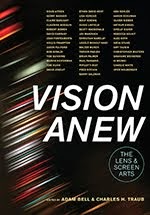
My review of Frowst by Joanna Piotrowska (MACK, 2014) is now available on photo-eye. You can get the book here.
_____________________________
Families are notoriously prickly beasts. Even for the most loving family, there are moments of tension and an intimacy too close to disavow or escape. Yet, however much we assert our autonomy, familial ties, both chosen and given, shape us as individuals and remain with us throughout our lives. Equally funny and perplexing, Joanna Piotrowska’s Frowst is a sublimely absurd family album. Tightly edited, the book presents a series of staged moments between members of Piotrowska’s family that hover on the edge of tender embrace and claustrophobic revolt. The book’s title, frowst, is an archaic and predominantly British term, that not only denotes a stuffy, cozy and/or oppressive environment, but can also be used as a verb, and means to lounge around in that same space. Whether or not our family is near or close, we all lounge around in that space — touched from a distance or up close, shaped as individuals and united as families, we can’t escape.
Frowst is the third winner of the First Book Prize and follows Paul Salveson’s Between the Shell and Mrs. Merryman’s Collection — all published by MACK. Elegantly designed and smartly sequenced, the black and white images in the book defy a singular narrative and instead offer psychologically wrought and awkward moments of intimacy. Containing only twenty-eight images, the book shows a restraint that is refreshing. At the same time, the brevity of Frowst only seems to add to its perplexing nature. In the end, the book concludes with the image of a woman arched, belly down, on the floor and staring at the camera. The absence of explanatory text and the title alone will leave most puzzled and looking to the dictionary.

Interestingly, the poses throughout the book are partially inspired by the German therapist Bert Hellinger, who is best know for his theory and practice of Family Constellation therapy. Also popular with new age groups, the therapy claims to break destructive generational patterns in families. Often resembling bizarre trust exercises, Piotrowska's family embraces, tentatively touches one another, kisses, sits in each other’s laps and lay next to one another on the floor and outdoors. While the poses are not unnatural, the tension arises from the neutral gazes of her subjects, who stare off into space or blankly look at one another. Stripped of more expressive drama and eschewing any direct narrative, Piotrowska presents humorous and enigmatic fragments of gestures, interactions and encounters. Brothers squat and lounge on the floor in their underwear; sisters sit next to one another, their patterned dresses optically vibrating in unison; and a woman partially out of the frame gingerly places her hands around the neck of a seated woman.


In keeping with the book’s cryptic nature, the images have no titles. The only text is out-of-sequence Roman numerals at the bottom of the page that refer to the images. With no information or explanation, the images feel like they’ve been torn from an odd behavioral manual or, given the work’s inspiration, from a therapist’s journal—the notes and comments about the suggestive meanings of each pose and glance redacted. Shot in black and white, and often using a flash, the work also has a flat documentary quality. While the technical aspects of the work suggest an amateurish nature, the visually astute compositions suggest otherwise. In one beautiful image, shot without the flash, the dappled lighting of a tree falls on two women lightly embracing, and in another striking picture, three young men and women lay atop one another surrounded and enveloped by a field of freshly cut grass.
Despite the stilted formality of the images, there is a tenderness that pervades the work. Ironically, each neutral touch and glace suggests not only permission and trust, as well as the occasional hint of exasperation, but also an affection that can only arise from the close ties of family. Equally farcical and confounding, Frowst is an intriguing and compelling first book by an exciting new talent. Let’s hope there’s more confusion to come.
Please note: This review originally appeared on photo-eye on July 28th, 2014. You can get the book here.





